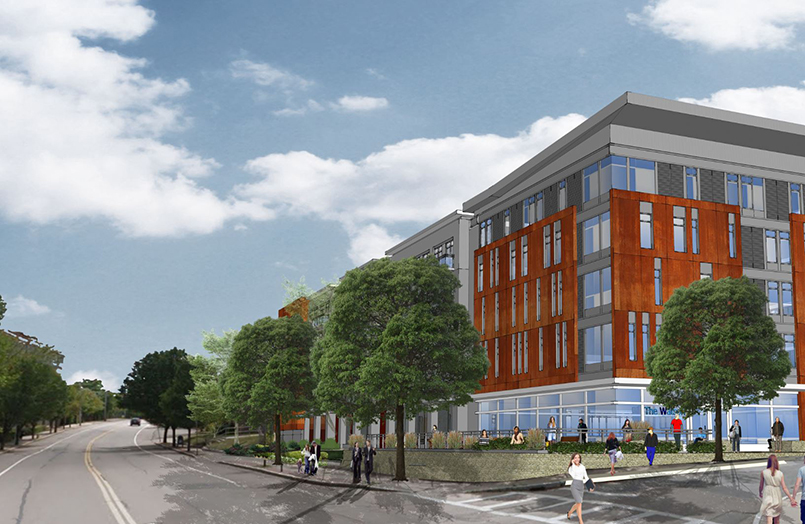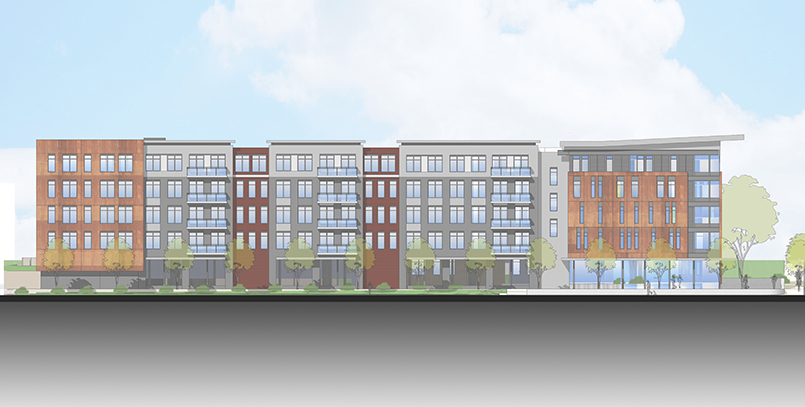
25 Apr At Quincy project site, Baker calls for $1.3 billion in housing funding
East Howard Street Residential Development
Read the full article: Patriot Ledger
April 24, 2017
By Sean Philip Cotter

QUINCY – Gov. Charlie Baker used the site of a planned Quincy Point affordable-housing development as the backdrop to announce that his administration was seeking $1.3 billion for such projects.
“For us to be successful over time … we have to create more housing units young people and young families can live in,” Baker said to a small crowd at 116 E. Howard St.
Baker was joined by state and local officials including Lt. Gov. Karyn Polito, Quincy Mayor Thomas Koch and state Sen. John Keenan in speaking behind the long-vacant property in Quincy Point on Monday afternoon.
Within the next few months, Developers Neighborworks Southern Mass and Winn Companies plan to break ground on a project on that site, replacing the current blighted building with a new five-story structure featuring 140 apartments. Of those apartments, 20 percent would be restricted to people with very low incomes and 60-percent to people with middle-of-the-road incomes, with the rest at market rate.
Read the full article: Patriot Ledger






